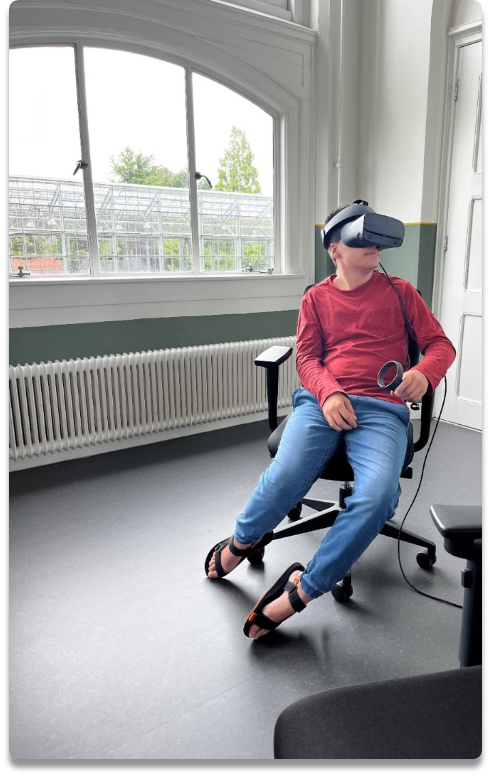Leiden University Centre for Digital Humanities
Small Grants 2023 Research Projects
The LUCDH foster the development of new digital research by awarding a number of Small Grants each year. As in previous years the LUCDH received a large number of excellent grant applications for Research and Personal Development funds. Congratulations to the recipients of this year's research awards!
Small Grants 2023 Research Projects
Setting up Forensic Text Analysis Research
Willemijn Heeren
Authorship analysis techniques chart similarities between texts in sophisticated ways and support the attribution of manuscripts by unknown authors to known authors. These techniques have been developed mostly for large texts, such as book manuscripts. For reliable use in forensics the text features developed for manuscript attribution cannot simply be re-used, because in forensics, features must also provide reliable information in much shorter text types (e.g. e-mails and chat messages). Also, features characteristic of these shorter text types versus features characteristic of their authors need to be sorted out.
To support further research on how different text types that are relevant in forensic contexts convey author information, and on how variation within and between authors is distributed across texts and text types, this project developed a research pipeline that allows for such work. The pipeline consists of components for the preprocessing of various text types, for feature extraction from texts, for feature comparison between texts, and will be extended to include a Bayesian statistical evaluation of the similarities and differences.
Recent developments in forensic speaker comparisons predict that this pipeline can be used for research on different materials as well, namely on speech transcripts used in forensic speaker comparisons. To further develop the quantification of word choice and language performance in speech, recent investigations have shown that a speech transcript contains useful information. Applying authorship analysis techniques to such textual representations of speech, features such as word choice can be quantified in systematic ways, and used to differentiate between individuals.

VR Videos for SLA Research
Paz Gonzalez Gonzalez & Nivja de Jong
Using 360° scenarios as rich stimuli to elicit second language learners’ production data
The optimal elicitation of interlanguage has been a recurring theme in SLA methodology. Studies have been carried out to elicit data from standardized tests, production tasks, mostly written, and also oral data collection has taken place. Lately, Paz González has worked with visual stimuli as tools to elicit specific language data. Nevertheless, her experience is that the carefully developed stimuli (comics, photographs, (see picture)) only provide part of the context: although we can never fully control what the speaker may be thinking about at a given moment, 2D stimuli on paper are very limited, and can be partial and restricted. The current project involves Virtual Reality (VR) scenarios using a 360° environment, as this technique can offer more detailed stimuli.
Presenting language learners with a 360° environment can help us get much closer to a full and natural context; the previous proof of concept aimed to achieve a controlled vivid context for linguistic experiments thanks to VR technology. The goal of the current research proposal is to create even more vivid contexts, learning from the improvements stated in the previous study, and use them to collect L2 data and test the technique for the language learning classroom.
Concretely, we plan to use this methodology to study the acquisition of aspect in Spanish. In which scenarios do learners use ‘caminé’ (I walked), in which ‘caminaba’ (I was walking/would walk) and in which ‘he caminado’ (I have walked)? What are the essential contextual and linguistic factors in the choice between these past verb forms in the interlanguage of the L2 learners? Additionally, we will explore how the VR scenarios can be used in language teaching contexts. For this part, we will present the (adapted) scenarios to language teachers and ask them to advise us on the practicability of using such tasks, which will lead to improving the tasks further for the L2 classroom.
Mapping Ancient Migration
Rens Tacoma
Despite slow travel methods, geographical barriers and social inequalities, individuals living in the Hellenistic and Roman era are thought to have been quite mobile. This is the consensus that historians have come to since the “mobility turn” of the social sciences took root in ancient historiography from the 1990s onward. Recent years have seen projects improving our knowledge of Graeco-Roman mobility. One important source is formed by inscriptions. Usually they consist of small tombstones in which the origin of the deceased is recorded. Historians have begun to explore their potential, discussing not only the data they contain, but also the biases of the material, and the issue of self-representation.
Funerary epigrams offer an invaluable but understudied source in this regard. These inscriptions, written in verse, are usually longer and provide more details than prose epitaphs. Their interpretation is not straightforward, but they allow for a nuanced study of ancient mobility. Their potential has been explored before, in particular in an upcoming book co-authored by the project leader. The dataset of this monograph provides us with roughly 150 epigrams that mention mobility. Similarly, an on-going research traineeship program on Greek epigrams from Rome – involving the project leader and the student who will carry out this Small Grant project – provides a second, smaller dataset. Our project will use QGIS to map the migration patterns of the individuals mentioned in the epigrams of these two datasets.
As such, this project has three related goals. The first and most concrete goal is the visualization of migration patterns in Greek epigrams from the Greek East dating to Hellenistic and Roman times. In this way we can analyze changes over time, compare the mobility patterns of males and females, and contrast the movement of elites with that of non-elites. The second goal is to apply the same methodology to the epigrams from Rome. The third and main goal follows directly from the first two. It is the development of an efficient method that is also applicable to other datasets and that can be used by other scholars.
Overall, digital tools to visualize the data will not only help to illustrate the arguments made in more traditional qualitative and textual analyses, but actually provide a method for further study.

3D Reproduction Methods in Contested Heritage
Liselore Tissen
In 1963, the Volkenkunde museum in Leiden, the Netherlands, acquired a Mesoamerican human skull covered with mosaic. Although research, proved its composition to be a forgery, it does contain an ancestral human skull that was taken and commodified as Mexican curios. This is not an exception there are many cases of cultural dispossession that indigenous communities have been subjected to.
The discussion about the repatriation and restitution of stolen or looted artifacts has been a growing topic of interest within the humanities and museums. Museums are hesitant when it comes to restitution requests and claims of their objects. One argument is that, evidently, there is only one authentic artifact. Returning the requested artifact might mean losing a precious and important object of the collection, however, for communities of origin it means the return of a piece of their culture. Unfortunately, this oftentimes results in an uneven conversation as the communities of origin are oftentimes not consulted within the decision-making process (e.g. the repatriation of Naturalis’ Java Man to Indonesia). A solution to find a compromise for these two different perspectives has not yet been provided.
Yet, recent developments in the digital and technological field might provide a solution to this ethical debate. 3D printing specifically has made it possible to create almost identical copies of any artifact. Furthermore, because the 3D model necessary to fabricate an object can be manipulated digitally (e.g. by enlarging sections) and disclosed unlimitedly, an artifact can be shown in a variety of ways, igniting new ways of interpreting and engaging with original artifacts.
This project aims to use the Mixtec skull as a case study explore the applicability of 3D printing and scanning to negotiate issues surrounding contested heritage in museums in a co-creative way.




